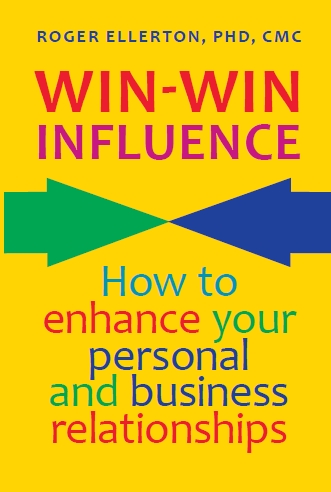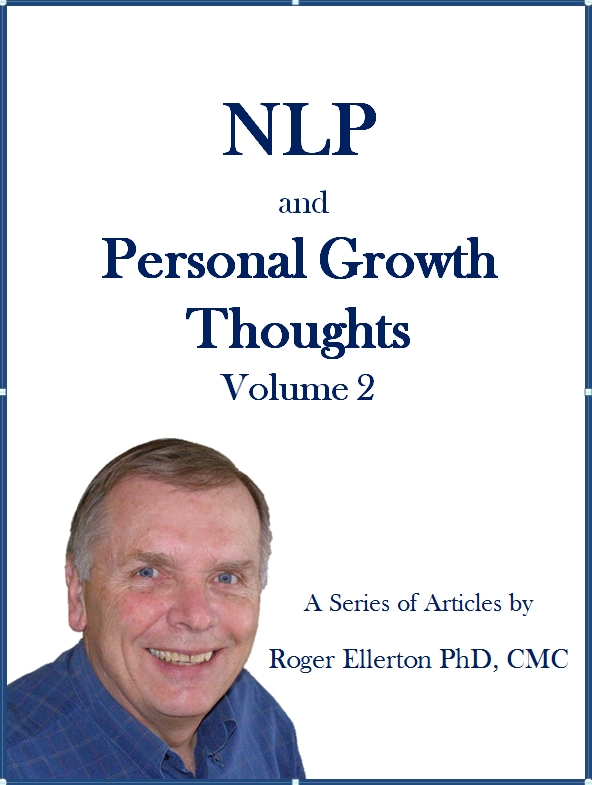Coach Your Client from Stuck to Action
By Roger Ellerton Phd, ISP, CMC, Renewal Technologies Inc.
This article may not be republished without written permission from Roger Ellerton/Renewal Technologies Inc. If you republish this article without permission, you will be in violation of copyright law and sent an invoice. You may share this and other pages with your friends by linking directly to this page from your website or blog.
Something is holding your client back from achieving what she desires. Your client may be a coaching client, a friend you are assisting, a subordinate at work or one of your children. Your intention is to assist your client to be more resourceful and to take action.
Your client is most likely stuck as a result of one of the following:
- Mired in the details and has lost sight of her intended outcome. In this case, ask her, "You are working on this, for what purpose?" You may have to ask her this question several times before she can get out of the details and focus on what is truly motivating for her. This may be all the help she needs. Or, in getting the answer to this question, she may find that she is now held back by one of the following issues.
- Not able to focus on what she wants due to limiting beliefs, fear of the unknown, fear of ridicule or not feeling resourceful.
- Feels overwhelmed and does not know where to start.
As a coach, your main activities are to assist her to:
- Stop dragging problems from the past into the present. Problems only remain problems for as long as we continue to focus on them and look for evidence to verify that our problems are 'real', while ignoring facts to the contrary. Take the energy out of the problem and put it back in the past where it belongs.
- Create a resourceful state from which to move forward. Each of us has the ability to be resourceful. Sometimes we get ourselves into an unresourceful mental state and hence do not have access to all of our resources.
- Identify the next reasonable small step and commit to completing it.
The Process
The following, based on concepts from NLP trainer John Overdurf, is one way to expand the above into a process you can use with your clients.
Two critical assumptions:
- You have your client's permission to assist her in addressing her issue. How many times have you seen someone jump in to help a friend when all the person wanted was someone to listen to them?
- Your client feels safe with you and the process.
1. Identify What the Problem Really Is
Inexperienced coaches far too often attempt to help a client without a full understanding their client's problem or may attempt to resolve too large a problem. Begin with a specific situation1 and ask questions such as: "What's the problem?", "How do you know this is a problem?", "Where, when or how do you do it?" Continue until you and your client are clear as to what the problem is.
1Begin with a specific situation. Once that is resolved, allow/assist your client to inductively generalize the new way of life to all other situations. After all, this is most likely the way her problem became so pervasive - she generalized a few situations to a much larger context.
Summarize the problem state using the same words used by your client. Verify if this is the issue to be addressed.
2. Identify Your Client's Desired Outcome
Be clear in what her outcome is by asking questions.
Summarize your client's desired outcome using the same words as she did.
3. Take the Focus Off the Problem
Begin by acknowledging your client's current situation using her choice of words. At this time you would use the present tense, as she is your client because she has dragged something that she perceived to be a problem from the past into the present, thus sustaining it.
Through conversation (using questions and reframing as often as possible), take the energy and focus away from the problem. You may begin by referring to the problem as something that occurred in the past - at first the near past, gradually putting it further into the past. If in describing the problem, she used adjectives to describe it as a 'huge' problem, at some point refer to it as a problem and then perhaps a small problem. Help her realize there are many times and places where this problem doesn't even arise.
4. Assist Your Client to be in a Resourceful State.
To make the transition from leaving the problem in the past and becoming resourceful, say to your client, "That's the way you were. How do you want to be instead?"
Once your client responds with a resource state, help her take this on by asking, "What's it feel like when you're ... ?" Use your voice tonality and physiology to guide her as she takes on this new resource. If she hasn't done so, encourage her to also take on a corresponding physiology.
The resource state should be one with a great deal of energy associated with it - excited, motivated, energized; rather than something such as calm. If being calm is important to her, you may wish to augment this state with other resources. For example, in addition to being calm, perhaps she would also like to feel confident and respected. For those of you familiar with NLP, this is called stacking anchors.
5. Collapse the Resourceful State on the Unresourceful Problem State.
With your client fully in a resourceful state, have her take these feelings/energies and overwhelm any of the feelings of the stuck state - for those of you who know NLP, this is a version of collapse anchors. To do this, ask your client, "As you are fully enjoying and in the feelings of (resource state from step 4), think of what used to stop you in the past and how do you feel now?"
Test (several times) to verify your results and to fill up her convincer strategy by asking, "As you think about achieving your outcome (Step 2), how do you feel or what comes to mind?" If your client talks about being stuck or is neutral, repeat steps 4 and 5 and perhaps step 3.
6. Next Reasonable Small Step
From this perspective of resourcefulness, ask your client, "What is the next reasonable small step that you can take towards achieving your outcome?" Get timeframes and a way to measure progress.
7. Continue with a Sequence of Small Steps
As each small step is completed verify the outcome, as originally stated, is still valid and identify the next reasonable small step.
Occasionally after completing a step, the new information or perspective that she has may lead her to modify her outcome or in some cases abandon it for something that is more motivating/desirable.
Enjoy and best wishes for success and happiness in your life.
Author: Roger Ellerton is a certified NLP trainer, certified management consultant and the founder and managing partner of Renewal Technologies. The above article is based on his book Live Your Dreams Let Reality Catch Up: NLP and Common Sense for Coaches, Managers and You.
Copyright © 2007, 2015, Renewal Technologies Inc. All rights reserved.








